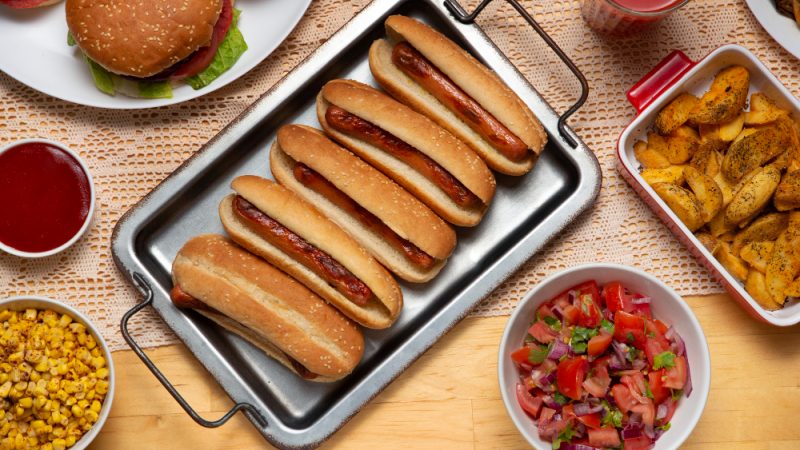Making homemade beef jerky is both rewarding and delicious, but one of the biggest challenges beginners face is figuring out exactly when it’s ready. Underdone jerky can spoil quickly, while over-dried jerky turns tough and tasteless. In this guide, you’ll learn how to know when beef jerky is done, the visual and texture cues to look for, and a few expert tricks that guarantee perfectly dried jerky every time.
Understanding What “Done” Means for Beef Jerky
Beef jerky is considered “done” when enough moisture has been removed from the meat to make it safe for long-term storage, without losing its chewiness or flavor. The key is to dehydrate the meat just enough to preserve it, but not so much that it becomes brittle or overly dry. Properly dried jerky will bend and crack slightly but won’t snap in half. It should have a leathery surface and a rich, even color.
The Importance of Proper Drying
Drying beef jerky is about striking the right balance between safety and texture. The dehydration process removes moisture that bacteria need to grow. If jerky is not dried enough, it can spoil quickly. On the other hand, over-drying eliminates too much moisture, leaving the jerky hard and difficult to eat. Learning the correct drying time and testing for doneness ensures your jerky is both delicious and safe.
How Long Does It Take to Dry Beef Jerky
The drying time varies depending on the method you use and the thickness of your meat slices.
- Dehydrator: Usually 4 to 8 hours
- Oven: Around 3 to 6 hours
- Smoker: Between 6 and 10 hours
Thinner slices will dry faster, while thicker pieces take longer. Always start checking your jerky around the 4-hour mark to avoid over-drying. Remember that drying times are only a guide—your jerky’s doneness depends on texture and moisture, not just time.
The Visual Signs Your Jerky Is Done
A good way to know when beef jerky is done is by its appearance. The meat should look dark brown or deep reddish-brown with no visible wet or shiny spots. It should look dry on the surface but still have a flexible texture. If you see any moisture or oil pooling on the meat, it’s not ready yet. When you tear a piece apart, the inside should be dry but not powdery.
The Bend Test – The Most Reliable Method
The bend test is one of the most trusted ways to determine if beef jerky is ready. Here’s how it works:
Take a piece of jerky and bend it gently about halfway.
- If it bends easily and cracks slightly on the surface but doesn’t break, it’s done.
- If it snaps in half, it’s over-dried.
- If it bends without cracking or looks wet, it needs more time.
This simple test is used by both home cooks and professional jerky makers because it gives a clear, physical indication of dryness.
Texture and Feel – The Touch Test
Touch is another great indicator of doneness. Properly dried beef jerky should feel firm and slightly leathery. It should not feel sticky, soft, or spongy. When you press it between your fingers, it should give a little resistance but not feel moist. If your jerky feels tacky, it means moisture remains inside and it needs more drying time.
Checking the Internal Temperature for Safety
Food safety is crucial when making beef jerky. Before drying, it’s recommended to heat the meat to at least 160°F (71°C) to kill bacteria like Salmonella and E. coli. If you’re drying your jerky in a dehydrator or smoker, you can use a food thermometer to confirm it reaches this temperature before or during drying. Once heated properly, the dehydrating process will safely remove remaining moisture.
Tasting for Flavor and Texture
Taste testing is a reliable way to confirm readiness. Once the jerky looks and feels right, take a small bite. Properly dried jerky should be chewy, not crunchy, and full of concentrated beef flavor. If it’s still soft in the center, it needs more time. If it’s overly brittle and dry, you’ve left it too long. With practice, you’ll learn to recognize the perfect balance.
Cooling and Storing Your Jerky Properly
Even after you’ve determined that your beef jerky is done, proper cooling and storage are important for preserving its quality. Allow the jerky to cool at room temperature before sealing it. If sealed while warm, trapped steam can cause condensation and spoilage. Once cooled, store the jerky in airtight containers, vacuum-sealed bags, or glass jars. For long-term storage, keep it in the refrigerator or freezer.
Common Mistakes to Avoid When Making Beef Jerky
Learning how to know when beef jerky is done also means understanding what not to do. Here are a few common mistakes:
- Cutting uneven slices: Uneven pieces dry at different rates, leading to inconsistent results.
- Overcrowding the trays: Jerky needs airflow to dry evenly.
- Not preheating meat: Skipping this step can lead to bacterial contamination.
- Relying only on drying time: Always use visual and texture tests rather than time alone.
- Skipping cooling time: Sealing hot jerky traps moisture, reducing shelf life.
Avoiding these mistakes ensures that every batch comes out perfectly dried, safe, and flavorful.
Conclusion
Learning how to know when beef jerky is done takes a little practice, but once you understand the signs, it becomes second nature. The best indicators are texture, flexibility, and dryness. Properly dried jerky bends and cracks slightly, feels leathery but not brittle, and shows no wet spots. Always combine the bend test, touch test, and visual cues for the most accurate results. With time, you’ll be able to recognize perfect jerky at a glance — chewy, flavorful, and ready to enjoy anytime.
FAQs
1. How do I know if my beef jerky is undercooked?
If your jerky feels soft, sticky, or looks shiny with visible moisture, it’s underdone. Return it to the dehydrator or oven until it becomes dry and leathery.
2. Can I over-dry beef jerky?
Yes, over-drying makes jerky brittle and tough to chew. While it’s still safe to eat, it loses its flavor and ideal texture. Always perform the bend test to stop drying at the right time.
3. What happens if I don’t heat beef jerky before drying?
Skipping the heating step can allow harmful bacteria to survive. Always heat the meat to at least 160°F before or during drying to ensure it’s safe.
4. How long can homemade beef jerky last?
When stored in an airtight container at room temperature, homemade jerky lasts about one to two weeks. In the refrigerator, it can last up to a month, and in the freezer, up to three months.
5. Can I tell if beef jerky has gone bad?
Yes. Spoiled jerky often has an off smell, sticky surface, or mold growth. If you notice any of these signs, discard it immediately to avoid foodborne illness.
Also read: 30 Off 28: How to Figure Out the Discount and Pay Less









